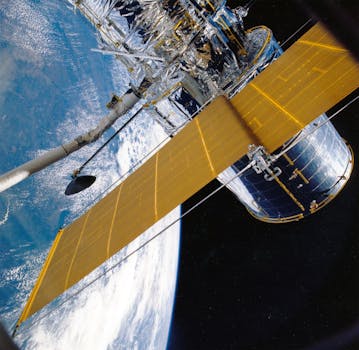Satellite Telecommunications 2023: What’s New and What’s Next? – Advancements in Satellite Technology

Satellite Telecommunications 2023: What’s New and What’s Next? – Advancements in Satellite Technology
Satellite Telecommunications 2023 is an exciting time for the industry, with numerous advancements and innovations being made to improve global communication and connectivity. The use of satellite technology has become increasingly important in recent years, with more people relying on it for various purposes such as navigation, communication, and remote sensing. In this article, we will explore what’s new and what’s next in the world of satellite telecommunications.
The satellite telecommunications industry has experienced significant growth in recent years, driven by the increasing demand for global connectivity and the need for reliable and efficient communication systems. With the advent of new technologies such as 5G and the Internet of Things (IoT), the industry is expected to continue growing, with more satellites being launched into space to meet the increasing demand for communication services.
Advancements in Satellite Technology

One of the most significant advancements in satellite technology is the development of high-throughput satellites (HTS). These satellites are designed to provide high-speed internet connectivity to remote and underserved areas, and are expected to play a crucial role in bridging the digital divide. HTS satellites use advanced technologies such as phased arrays and beamforming to provide high-speed internet connectivity, and are capable of delivering speeds of up to 100 Gbps.
Another significant advancement in satellite technology is the development of small satellites, also known as cubesats. These satellites are small, lightweight, and inexpensive, making them an attractive option for companies and organizations looking to launch satellites into space. Cubesats are being used for a variety of purposes, including Earth observation, communication, and navigation, and are expected to play a major role in the future of the satellite telecommunications industry.
What’s Next for Satellite Telecommunications?

So, what’s next for satellite telecommunications? One of the most exciting developments on the horizon is the launch of new constellations of satellites, such as the Starlink constellation being developed by SpaceX. These constellations are designed to provide global internet connectivity, and are expected to revolutionize the way we communicate and access information. With the ability to provide high-speed internet connectivity to remote and underserved areas, these constellations are expected to have a major impact on the satellite telecommunications industry.
Another significant development on the horizon is the integration of satellite technology with other technologies, such as 5G and the IoT. This integration is expected to enable new use cases and applications, such as smart cities and autonomous vehicles, and is expected to drive further growth and innovation in the satellite telecommunications industry.
Challenges and Opportunities

Despite the many advancements and innovations in the satellite telecommunications industry, there are still several challenges that need to be addressed. One of the biggest challenges is the issue of space debris, which poses a significant threat to the safety and sustainability of satellite operations. Another challenge is the need for more efficient and effective regulatory frameworks, which can help to facilitate the growth and development of the industry.
However, these challenges also present opportunities for innovation and growth. For example, the development of new technologies and systems for mitigating space debris is an area of significant research and investment, and is expected to drive further innovation and advancement in the industry. Similarly, the need for more efficient and effective regulatory frameworks presents an opportunity for governments and industry stakeholders to work together to develop new and improved regulations that can help to facilitate the growth and development of the industry.
See more:

